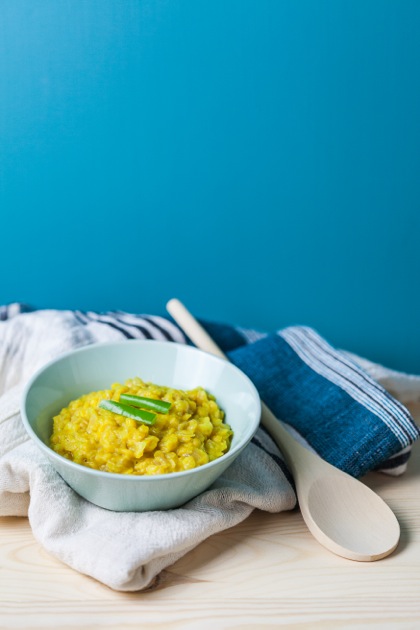Image: Helina Tesega and her partner Scott Albon
If there’s one thread that unifies all cultures, it would be the need to eat. It’s with this in mind that Helina Tesega started Eat Ethio as a way of introducing people to a contemporary Ethiopia that goes beyond the headlines, with its cuisine at its core. Also take a closer look into Helina’s home, where she occasionally holds private dining events.
Here, Helina talks to us about…
…living in Hong Kong.
Hong Kong could not be more different from where I grew up, but on the odd occasion when I’m travelling by tram or just walking around in quieter neighbourhoods, for a second I lose myself. When I think about it, there is some synergy between the dried seafood market where I live now and the proximity of the harbour front to that of the fruit, veg and spice market next to my home in Awassa.
…her mum, the hostess with the mostess.
Cooking, especially for guests, is part of the culture in Ethiopia. You feel awkward if people come and you don’t feed them. People will talk about it, too, if you don’t! But my mum is especially warm and welcoming. People feel comfortable around her. She’s such a good cook and loves cooking for people. When I go home, she’s always in the kitchen cooking for us. Every conversation is about food – Have you eaten? What did you eat?
…experimenting with traditional Ethiopian dishes.
Ethiopia’s never been colonised, so there’s no fusion in its cuisine. It’s very pure. People at home generally don’t like it when you change things. But a lot of my Instagram followers are Ethiopian – young Ethiopians living in New York or elsewhere abroad – and they’re so supportive of Eat Ethio. That makes me really happy because I never thought they’d accept mixing up Ethiopian dishes.
…the Eat Ethio ethos.
It’s a way for us to introduce the things we like about Ethiopia – food, coffee, design and music – but presenting it in our own way. For example, I’ll show guests the traditional coffee ceremony, but it doesn’t bring the best out of the beans, so instead we use a pour over kettle and Chemex. The menu design is by [my partner] Scott, and it’s inspired by Ethiopian patterns. Everything we do is very considered. Recently, we did a pop-up in Manila. The bloggers who came and wrote about the event said it actually made them want to go to Ethiopia. Messages like that make me so happy, because I feel like I did Ethiopia justice and inspired people to know more about the country.
…her favourite Ethiopian jazz song.
The music we play [at our events] introduces people to Ethiopian jazz. [My favourite song is] Menelik Wossenachew’s Tezeta, arranged by Mulatu Astatke. Mulatu is the father of Ethio-jazz, which took off in the jazz scene in the 1970s.
…what to try if you’re new to Ethiopian food.
I’d say lamb or beef tibs is always a crowd pleaser. Shiro ground chickpea stew is always a great introduction to the cuisine, too.
…Eat Ethio, the book.
It’ll be part recipe book and part cultural insight, with stories, interviews and beautiful photography. We worked with our favourite photographer, Luke Casey. We hope that it will be published next autumn; it’s has become a bigger project than first thought. We want to get it right! In the meantime, we’ll be releasing cooking videos on our website, also shot by Luke Casey, to encourage people to cook Ethiopian food at home.

Recipe: Kik Wot (Yellow Split Pea Wot)
Serves four as a side; two as a main
Preparation time: 10 minutes
Cooking time: 50 minutes
Ingredients:
1 cup yellow split peas
4 cups water
½ cup canola or vegetable oil
2 medium-sized finely chopped onions
1 tsp turmeric
1 tsp freshly minced garlic
½ jalapeno pepper for garnish, seeds removed and halved lengthways
Sea salt
Method: `
Rinse the split peas in cold water and drain. Boil the split peas in water for 20 minutes, but take care that the split peas do not become mushy. Remove from heat and set aside to cool. Remove any skin from the water. Add the oil and onions to a saucepan and simmer for 20 minutes, stirring occasionally. Add a splash of hot water to prevent onions from burning if necessary. Add turmeric and garlic, and cook for a further 15 minutes. Add the split peas and simmer for another 15 minutes, stirring occasionally. To serve as a soup, add hot water while it simmers. Garnish with the jalapeno, and season to taste. Kik wot is traditionally served with Ethiopian flatbread injera, but it’s also delicious with any type of bread or as a soup.
The post Ethio Eats and Beats appeared first on Home Journal.






